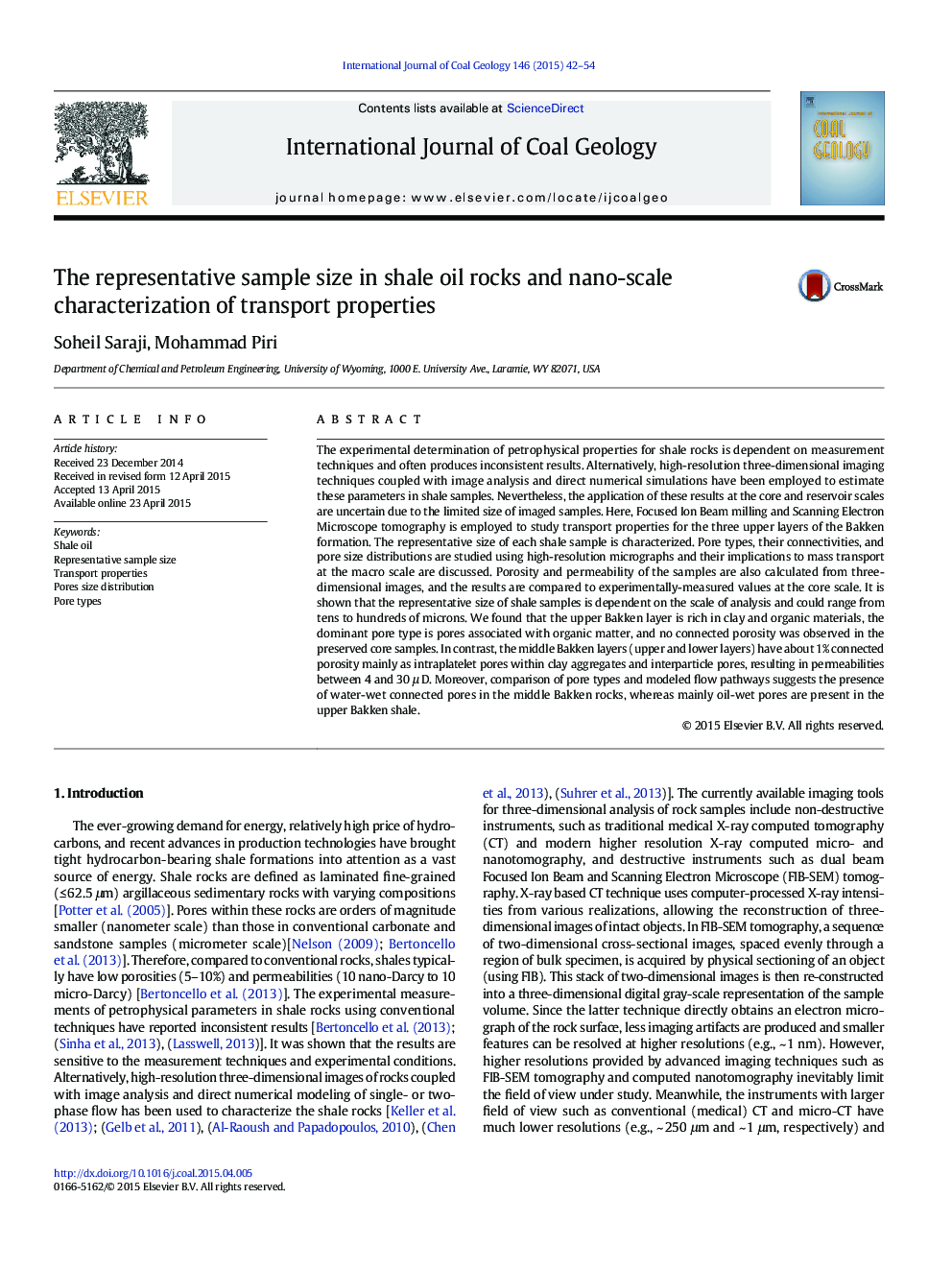| کد مقاله | کد نشریه | سال انتشار | مقاله انگلیسی | نسخه تمام متن |
|---|---|---|---|---|
| 1752918 | 1522554 | 2015 | 13 صفحه PDF | دانلود رایگان |
• Representative sample size for shales is dependent on the scale of analysis (from 10s to 100 s of microns).
• Oil-wet pores associated with OM are the main pore types in the upper Bakken layer.
• The middle Bakken formation contains water-wet intraparticle and interparticle pores.
• The rock samples have about 1% connected porosity and 1-30 μD permeability.
The experimental determination of petrophysical properties for shale rocks is dependent on measurement techniques and often produces inconsistent results. Alternatively, high-resolution three-dimensional imaging techniques coupled with image analysis and direct numerical simulations have been employed to estimate these parameters in shale samples. Nevertheless, the application of these results at the core and reservoir scales are uncertain due to the limited size of imaged samples. Here, Focused Ion Beam milling and Scanning Electron Microscope tomography is employed to study transport properties for the three upper layers of the Bakken formation. The representative size of each shale sample is characterized. Pore types, their connectivities, and pore size distributions are studied using high-resolution micrographs and their implications to mass transport at the macro scale are discussed. Porosity and permeability of the samples are also calculated from three-dimensional images, and the results are compared to experimentally-measured values at the core scale. It is shown that the representative size of shale samples is dependent on the scale of analysis and could range from tens to hundreds of microns. We found that the upper Bakken layer is rich in clay and organic materials, the dominant pore type is pores associated with organic matter, and no connected porosity was observed in the preserved core samples. In contrast, the middle Bakken layers (upper and lower layers) have about 1% connected porosity mainly as intraplatelet pores within clay aggregates and interparticle pores, resulting in permeabilities between 4 and 30 μ D. Moreover, comparison of pore types and modeled flow pathways suggests the presence of water-wet connected pores in the middle Bakken rocks, whereas mainly oil-wet pores are present in the upper Bakken shale.
Figure optionsDownload as PowerPoint slide
Journal: International Journal of Coal Geology - Volume 146, 1 July 2015, Pages 42–54
